The Russian Su-24 Tactical Bomber is a formidable aircraft that strikes fear into the hearts of its adversaries. Let’s Explore The Russian Su-24 Tactical Bomber Details. This aircraft was specifically designed to neutralize enemy secret locations with precision guidance. This all-weather supersonic fighter bomber possesses immense power and capability. Although it was developed in the Soviet era, this flying beast is still in active service in Russia with modern updates, making it a force to be reckoned with.
Equipped with state-of-the-art technology, the Su-24 is able to effortlessly navigate even the most challenging of conditions. Its superior speed and agility allow it to operate at supersonic speeds, giving it a distinct advantage in combat situations.
The Su-24 Tactical Bomber, also known as “Fencer” by NATO, is equipped with a variable-sweep wing, twin engines, and a side-by-side seating arrangement for its crew of two pilots. Pioneering the use of an integrated digital navigation/attack system, this aircraft’s development commenced in the early 1960s, and it entered full production in 1967, though production ceased in 1993. Nevertheless, it remains in active service with the Russian Air Force, Syrian Air Force, Ukrainian Air Force, Algerian Air Force, and several other air forces to which it was exported. With its unparalleled precision and accuracy, the Su-24 proves to be a formidable weapon in the hands of skilled pilots.

Construction Of The Sukhoi Su-24 Bomber
In 1962–1963, Sukhoi embarked on a mission to create an innovative aircraft with a simpler wing design than the F-111. The result was the S-6, a delta-wing aircraft equipped with two powerful Tumansky R-21 turbojet engines and a tandem seating arrangement for the crew of two. The mockup of the S-6 was meticulously designed and presented for inspection, but unfortunately, no further development was ordered due to the lack of progress on the Puma hardware. Despite this setback, the S-6 prototype remains a testament to Sukhoi’s ambition and drive to push the limits of aviation technology.
In 1964, Sukhoi began work on the S-58M, a modification of the Sukhoi Su-15 interceptor ( factory designation S-58 ). However, revised Soviet Air Force requirements called for a low-altitude strike aircraft with STOL ( short takeoff and landing ) capability. This meant the new aircraft needed to be able to cruise at supersonic speeds at low altitudes for extended periods of time to evade enemy air defences.
To meet these requirements, the design included two Tumansky R-27 after-burning turbojets for cruising and four Rybinsk RD-36-35 turbojets for STOL performance. To accommodate the large Orion radar antennas, the design featured side-by-side seating for the crew. To test the six-engine scheme, the first Su-15 prototype was converted into the S-58VD flying laboratory, which operated from 1966 to 1969.
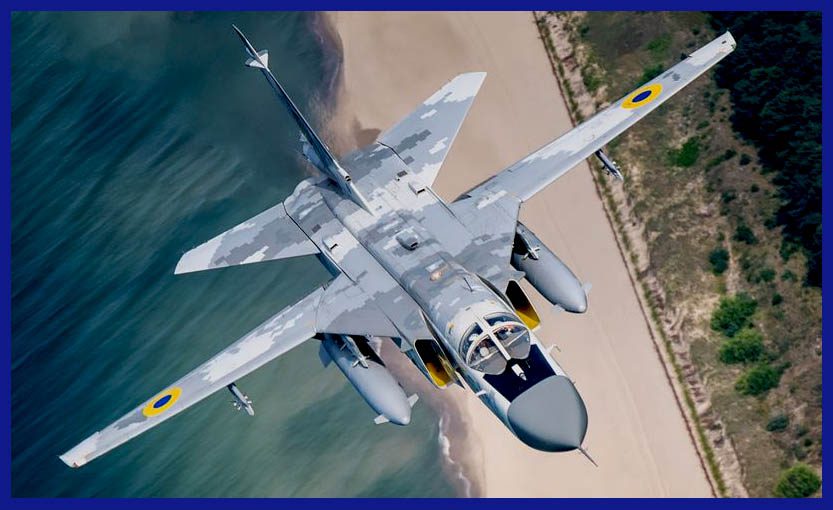
The Design Phase Of The Sukhoi Su-24
In August 1965, the T-6 aircraft was officially approved and given its internal codename. Vladimir Ilyushin piloted the first prototype, which was completed in May 1967 and made its inaugural flight on July 2. The four lift jets were installed later that year but were not used during the initial test flights. The R-27 engines were replaced with Lyulka AL-21Fs. During STOL testing, it was discovered that achieving short-field performance resulted in a significant reduction in flying range due to the lift engines taking up fuel reservoir space. Additionally, there was instability when switching from STOL to conventional flight, and a decrease in under-fuselage hardpoints. As a result, the Six-engine approach was abandoned.
In 1967, the American F-111 was already operational, showcasing the practical benefits of a swing-wing design. In August 1968, the OKB (Experimental Design Bureau) received a mandate to explore the implementation of a variable geometry wing for the T-6 aircraft. The inaugural flight of the resultant T-6-2I took place on January 17, 1970, with Ilyushin at the helm. Government trials continued until 1974, primarily due to the intricate nature of the onboard systems.
The Puma nav/attack system was used for the first time in Soviet tactical attack aircraft, providing day or night and all-weather capability. The crew was also equipped with Zvezda K-36D ejection seats. The resulting design had a range of 3,000 kilometres ( 1,900 mi ) and a payload of 8,000 kilograms ( 18,000 lb ), which was a slightly smaller and shorter range than the F-111.
During the development of the Su-24, there were a total of ten fatal accidents that claimed the lives of thirteen Sukhoi and Soviet Air Force test pilots. Afterwards, there were an average of more than five crashes per year. Despite these setbacks, the first production aircraft took flight on December 31, 1971, with V.T. Vylomov as the pilot. Finally, on February 4, 1975, the T-6 was officially accepted into service as the Su-24. Over the years, around 1,400 Su-24s were produced.
The Su-24M models that are still in service have undergone a life-extension and updating program to enhance their capabilities. This update program includes the installation of GLONASS, a modernized cockpit that features multi-function displays (MFDs), a Heads-Up Display (HUD), digital moving-map generators, and Shchel helmet-mounted sights. Additionally, the aircraft have provisions for the latest guided weapons, such as the R-73 (AA-11 ‘Archer’) air-to-air missiles. The upgraded version of these aircraft is known as Su-24M2.
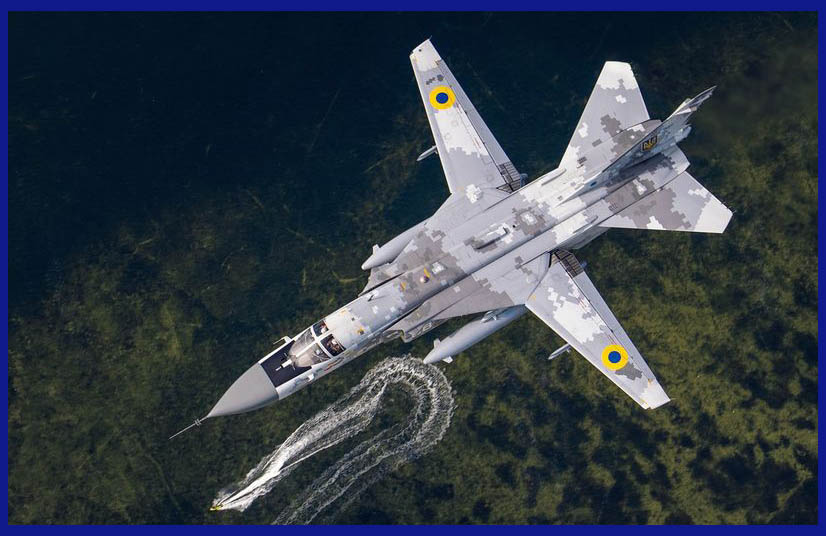
The Design Analysis Of The Sukhoi Su-24
The Sukhoi Su-24 features a small fixed-wing glove with a 69° sweep and a shoulder-mounted variable geometry wing. This unique wing design offers four different sweep angles, allowing for optimal performance at different stages of flight. For takeoff and landing, the wing is set at a 16° angle, while cruising at various altitudes can be achieved at 35° and 45° angles.
For low-level dashes, the wing can be set at a 69° angle, which reduces the wing’s aspect ratio and area, increasing the aircraft’s speed. Despite its heavier takeoff weight, the Su-24’s variable geometry wing enables excellent STOL performance, allowing it to land at a speed of only 230 kilometres per hour ( 140 mph ). This aircraft also provides a smooth low-level ride and little gust reaction, thanks to its high wing loading.
The Su-24 had special intakes in the early models that could go very fast and reach high altitudes. However, since the plane is mainly used for flying at low altitudes, the parts for the intakes that were not needed were removed. This made the aircraft lighter and easier to maintain, but it could not fly as fast or as high as before.
The first models of the Su-24 had a boxy rear end, but later ones had a more streamlined shape around the engines to make them more efficient. These updated aircraft also had a few other changes, including new antennas and a different place for the braking chute. NATO called these updated planes “Fencer-B,” but the Soviet Union did not give them a new name.
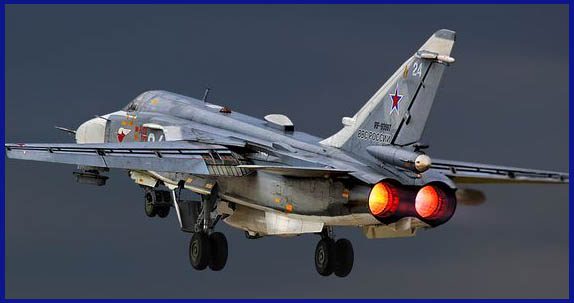
The Sukhoi Su-24 Armament Integration
The Sukhoi Su-24 is equipped with a powerful fixed armament in the form of a single GSh-6-23 cannon, which can fire rapidly and has 500 rounds of ammunition. The cannon is located on the underside of the fuselage and is covered with a protective shutter when not in use. In addition to this, the Su-24M/24MK typically carries two or four R-60 ( NATO AA-8 ‘Aphid’ ) and R-73 Archer infrared missiles for self-defence purposes. With these weapons, the Su-24 is well-prepared to engage in combat and defend itself when necessary.
The initial Su-24 versions had basic ECM equipment with the Sirena radar-warning receiver and no jamming system. However, later models featured advanced radar and missile-launch warnings, along with active ECM equipment using triangular antennas on the sides and the tip of the vertical fin. These upgrades led to the NATO designation “Fencer-C”. Some subsequent Su-24 models like the “Fencer-D” had large wing fences/pylons with integral chaff/flare dispensers, while others had launchers added to the tail fin sides.
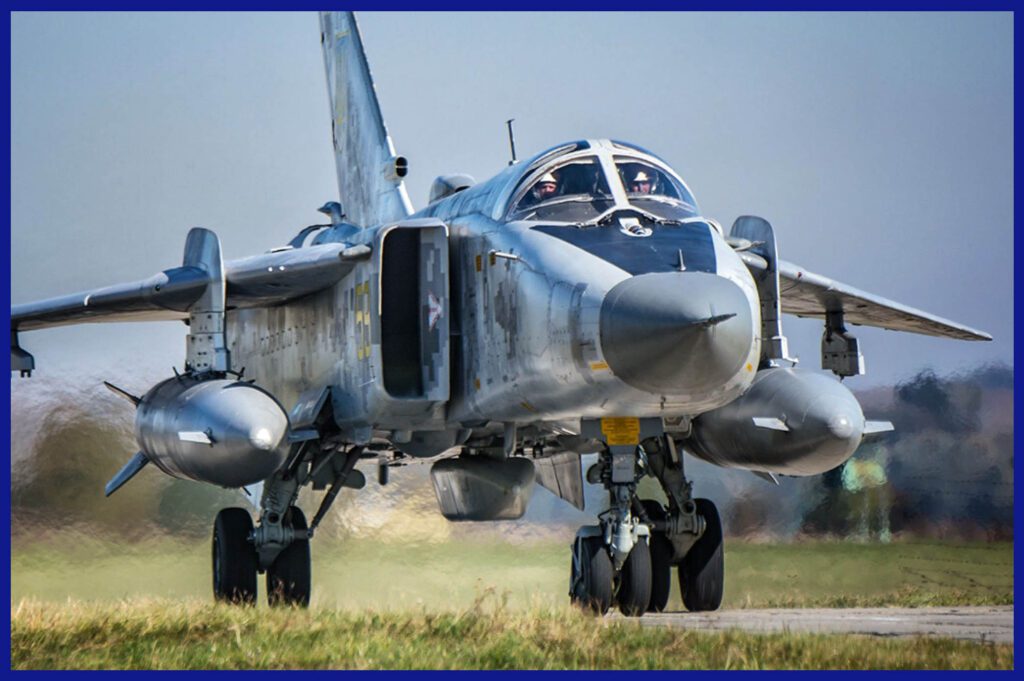
The Recent Operations Of The Sukhoi Su-24 Bomber
During military operations in Syria
On November 24, 2015, a Russian Su-24M bomber was tragically shot down by two Turkish F-16s near the Turkey-Syrian border. This incident sparked a diplomatic crisis between the two countries, as Russia accused Turkey of violating international law by downing their aircraft. The two crew members onboard the Su-24M managed to eject before the plane crashed in Syrian territory. However, conflicting reports emerged regarding their fate.
A deputy commander from a Syrian Turkmen brigade asserted that his personnel had shot and killed the crew while they were descending in parachutes. Conversely, some Turkish officials later claimed that the crew was still alive. Eventually, the weapon systems officer was rescued by Russian forces, but tragically, the pilot lost his life along with a Russian marine involved in a helicopter rescue attempt. Following the incident, Russian President Vladimir Putin cautioned Turkey about serious consequences, leading Russia to implement several safety measures during aerial operations in the region.
In response to heightened aerial combat risk, Russia swiftly deployed additional interceptor fighter jets to accompany bombers during sorties. S-400 SAM systems were stationed in Syria for enhanced aircraft protection, and a Russian cruiser provided naval defence off the coast. To boost the Su-24M’s air defence capabilities further, Russia announced the fitting of air-to-air missiles on operational sorties in Syria. This incident poignantly reminds us of the dangers pilots face during combat missions, highlighting the critical importance of implementing necessary safety measures.
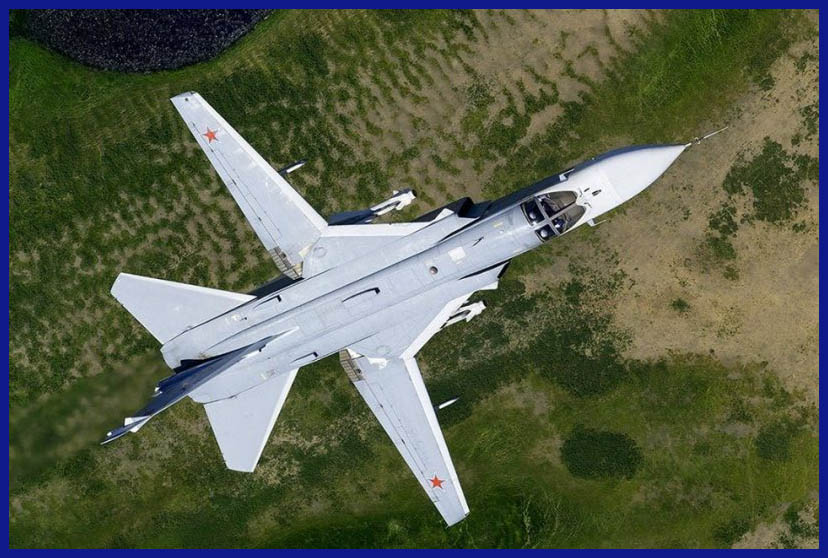
During Russo-Ukrainian War
During the ongoing war in Donbas, a Ukrainian Air Force Su-24 bomber faced a dramatic moment on 2 July 2014, when it was hit by a MANPADS missile fired by pro-Russian forces. The missile caused severe damage to one of the engines, but the brave crew managed to steer the aircraft back to base and make a safe landing. However, during the landing, a new fire broke out, adding to the already tense situation.
Thankfully, the ground crew quickly sprang into action and managed to put out the fire. In another incident on 20 August 2014, a Ukrainian Su-24M was shot down by Russian proxy forces in the Luhansk Oblast, sending shockwaves through the Ukrainian Air Force. Miraculously, the crew members managed to eject safely and were rescued later. However, on 21 August 2014, the downed plane was identified as a Su-24M, adding to the severity of the situation.
Despite these incidents, Ukraine demonstrated remarkable resilience by continuing to employ Su-24Ms during the 2022 Russian invasion of Ukraine, with an estimated 10-20 operational Su-24s prior to the invasion. The brave pilots and crew members courageously faced extreme peril while operating these aircraft, fully aware that they were being targeted by Russian forces. These events stand as a poignant testament to the bravery and unwavering dedication of the Ukrainian Air Force personnel who selflessly risked their lives to defend their country against the Russian invasion.
In the initial hours of the Russian invasion, the Ukrainian Air Force deployed two Su-24Ms to battle the Russian Airborne Forces at Antonov Airport. Sadly, on 27 February, one of the Ukrainian Su-24s crashed near Bucha, Kyiv Oblast, resulting in the death of pilots Commander Ruslan Aleksandrovich Belous and Commander Roman Aleksandrovich Dovhalyuk. They were later awarded the Order of Bohdan Khmelnytsky.
Another Su-24 was reported lost on 3 April, and a video of the crash site showed remains of a blue-coloured AL-21 engine that was used by the bomber. The situation continued to worsen when another Ukrainian Su-24 was destroyed by Russian forces in Izyum on 10 April. On 19 May, a Su-24 from the 7th Tactical Aviation Brigade was lost near Pylove and both the pilot, Lt. Colonel Igor Khamar, and the navigator, Major Ilya Negar, died. The loss of these planes and the brave men who piloted them is a tragic reminder of the human cost of war.
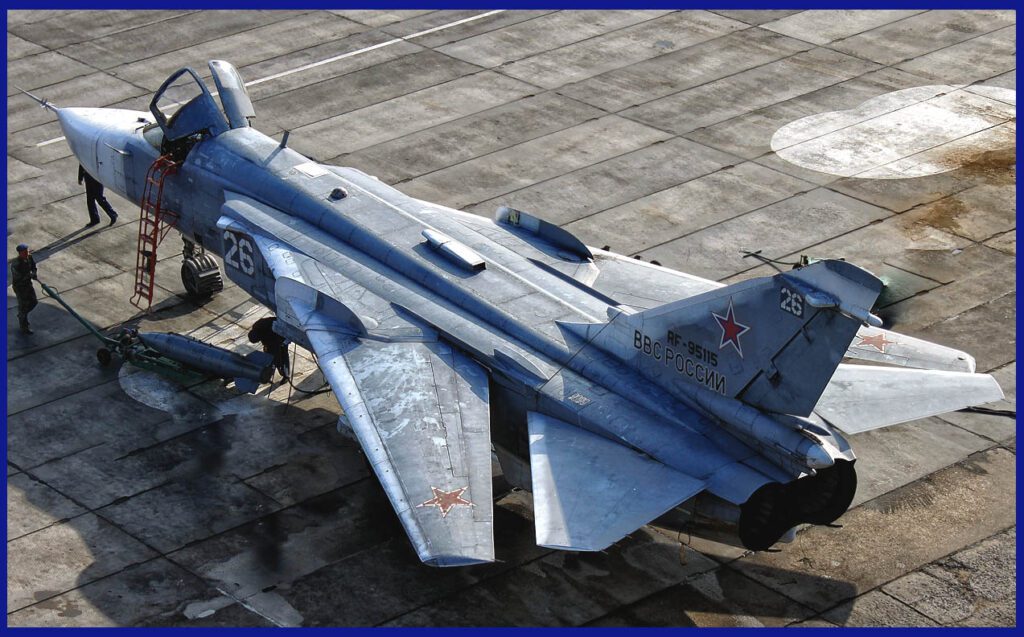
The Sukhoi Su-24MK Technical Specifications
- Crew: 2 ( pilot and weapons systems operator, seated side-by-side )
- Length: 73 ft 11 in ( 22.53 m )
- Wingspan: 57 ft 10 in ( 17.64 m ) spread wings / 34 ft ( 10.37 m ) swept wings
- Height: 20 ft 4 in ( 6.19 m )
- Empty Weight: 22,300 kg ( 49,163 lb )
- Max Takeoff Weight: 43,755 kg ( 96,463 lb )
- Payload: 8,000 kg ( 17,635 lb )
- Powerplant: 2 × Lyulka AL-21F-3A turbojet engines, 75 kN ( 17,000 lb ) thrust each dry, 109.8 kN ( 24,700 lb ) with afterburner
- Max Speed: 1,654 km/h ( 1,028 mph ) / Mach 1.6 at high altitude
- Cruise speed: 900 km/h ( 560 mph ) Mach 0.7 at low altitude
- Combat range: 615 km ( 382 mi ) on Low attack missions with only 3,000 kg of ordnance
- Ferry range: 2,775 km ( 1,724 mi )
- Service ceiling: 36,000 ft ( 11,000 m )
- Rate Of Climb: 150 m/s ( 29,527 ft/min )
- Armament: 1 x internal 23 mm Gryazev-Shipunov GSh-6-23M rotary cannon with 500 rounds. And different combinations of guided Missiles on its total 9 hardpoints with a capacity of up to 8,000 kg ( 17,635 lb ), with provisions to carry _ R-60, R-73 AAM / Kh-25, Kh-29, Kh-59 ASM / Kh-31 Anti-ship missile / Kh-27, Kh-28, Kh-58 Anti-radiation missiles / Different Guided KAB-500 and Unguided bombs and Rockets.
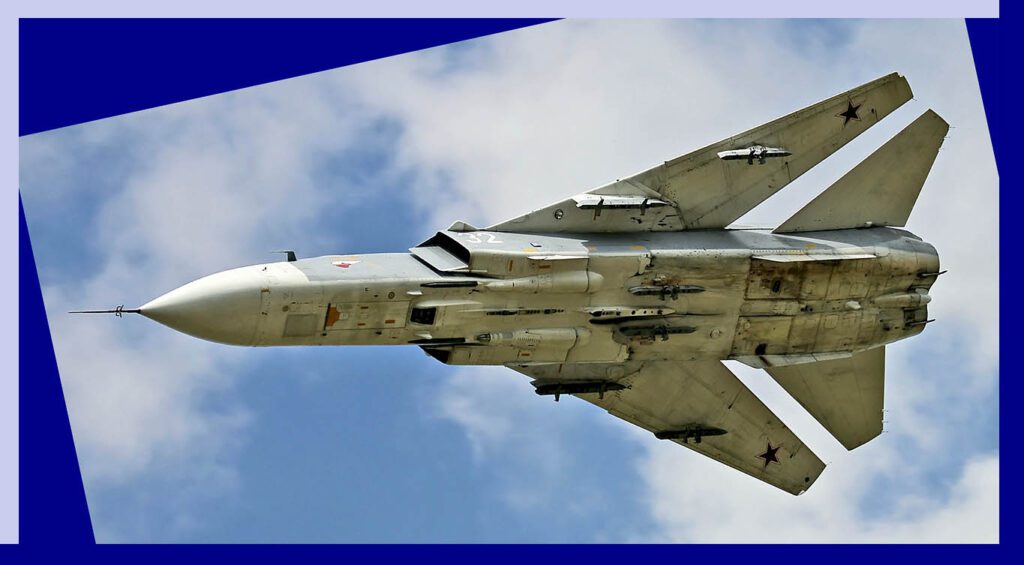
In conclusion, the Sukhoi Su-24 has been an essential aircraft for the Russian military for over four decades. Its combination of speed, manoeuvrability, and weapons capabilities have made it a formidable force in combat situations. Despite its age, the Su-24 continues to be a vital component of the Russian Air Force, with upgrades and modernization efforts ensuring its relevance for years to come. The aircraft has also seen action in conflicts around the world, cementing its reputation as a reliable and versatile combat platform. While its future may be uncertain, there is no denying the significant impact the Su-24 has had on modern military aviation.
Alongside this article, seize the exclusive opportunity to acquire premium-scale diecast models of legendary Russian fighter jets, including the Sukhoi SU-57 Felon, SU-30SM Russian Knights, Sukhoi SU-34 Fullback, and Mikoyan MiG-29 Fulcrum. Available only at Air Models, these remarkable and iconic long-range military fighters boast impeccable track records and are now purchasable on AirModels with worldwide delivery. Click here now to secure your piece before the limited stock is depleted.

Important Announcement for Our Valued Readers!
After an article is published, it is possible that updates or changes may have occurred beyond the time of publication. Therefore, it is important to be aware that certain information in the article might be outdated. To ensure the most accurate analysis, it is highly recommended to verify the content with the latest sources available.
However, we are dedicated to delivering outstanding articles on military products and global updates. Maintaining quality and smooth operation requires resources. Your support sustains our efforts in providing insightful content. By purchasing high-quality products through our affiliated links, you help us keep our platform alive and acquire top-notch items. Your unwavering support is invaluable and inspires us to strive further.
We welcome your suggestions and requests for more information, as we value feedback from our readers. If there’s specific defence material or equipment not covered on our site, please share your request in the comments. We’ll strive to research and provide the required information. We sincerely thank you for your unwavering interest in our website, and we eagerly anticipate hearing from you! Enjoy your reading experience!
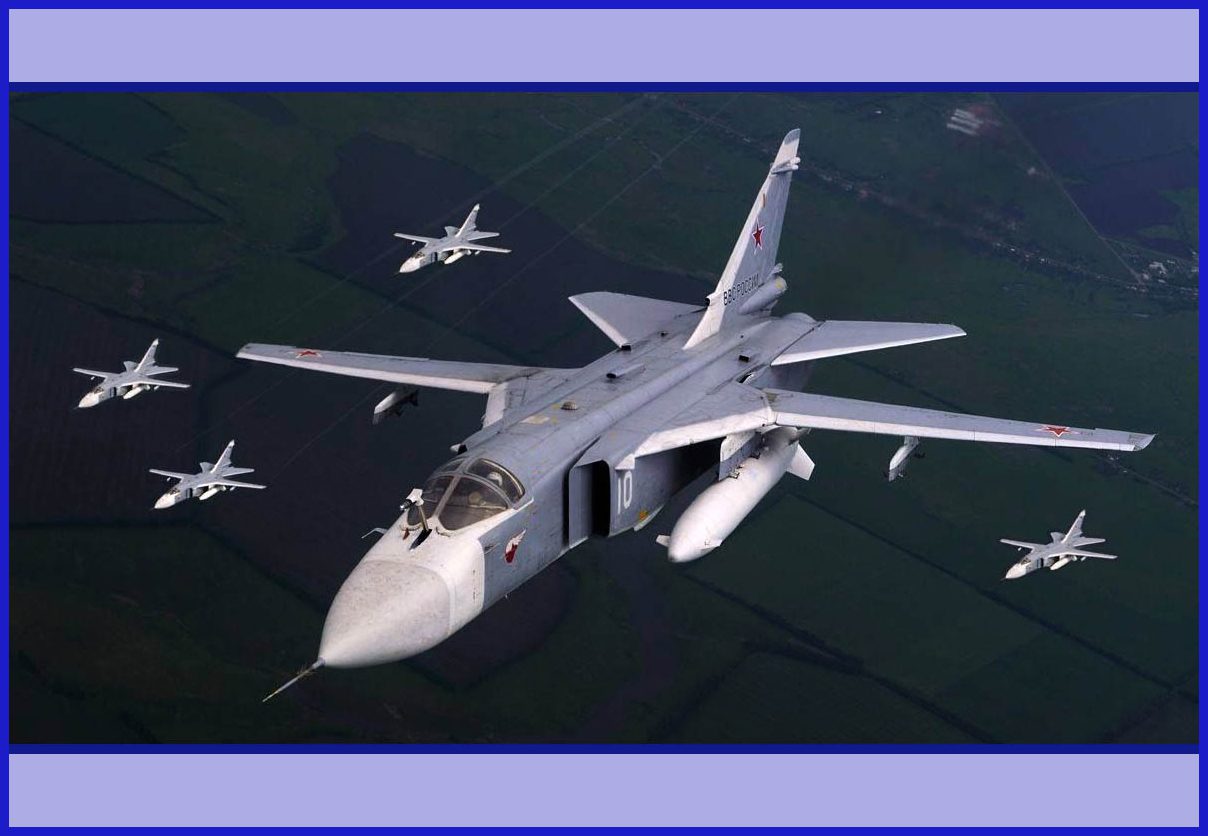
5 thoughts on “Let’s Explore The Russian Su-24 Tactical Bomber Details”